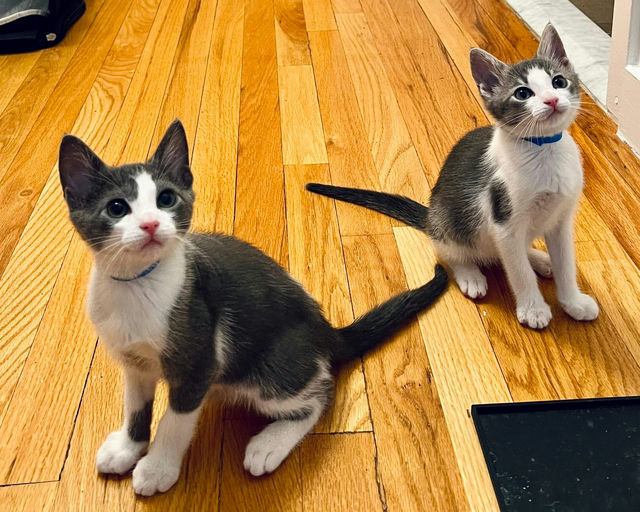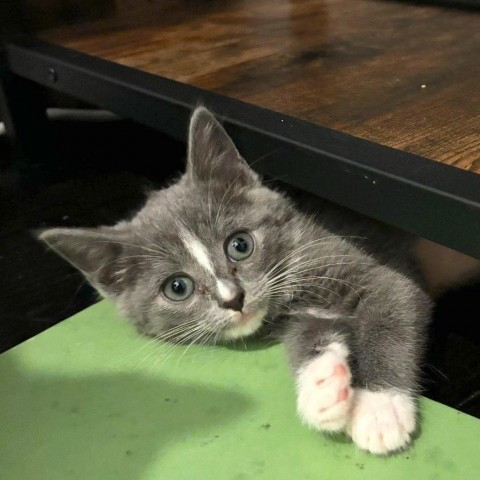Words of wisdom for the week!
Of course, some of us live in insanely crowded little apartments where even a litter of four social cat siblings won't feel that they have adequate room to grow up. This is a problem beyond the ability of cats to fix. You must fix it for yourself. Lose no time.
But, for rural people, truer words were never memed.
How much space do cats need? Enough to feel satisfied with their territory. Female cats who are pets may feel that one lap per cat, with a good-sized house and yard, suffices. Male cats usually prefer to range through about a square mile of territory without encountering other male cats; if they do, they'll probably fight for status. Social cats of both sexes will share space, but even after neutering male cats usually share the perception of most humans that male cats stink. (All but themselves, of course. Each male cat is convinced that he smells nice. Unfortunately he is alone in this belief.) \
At a house of reasonable size, with a yard of reasonable size, the Patchnose Cat Family have seemed to thrive by the half-dozen.
I've visited Cat Sanctuaries where other cat clans throve for years at larger population densities, but I've also seen large cat clans ravaged by diseases. Generally a dozen cats at one address, say three cats per human, is pushing the envelope. With normal cats, two per human may be setting up conflicts.
Reasonable people of good will, however, should try to maintain one cat per adult lap in any living situation. In situations where this would result in crowding, such as large apartment blocks, reasonable people of good will are highly motivated to get out.
Here are some of the most photogenic cats in the Eastern States who are highly motivated to help humans solve problems, including the problem of living in a horrible apartment block where surviving even a few hours' power outage requires heroic efforts. Bonding with a cat will motivate you to find a house in a decent neighborhood where the cat can prowl outdoors as nature intended...and where a child can expect to have friends rather than have to join a gang, and where people can move out of the way of a flood or fire...
Since the last cat photo contest featured pale calico cats like Dora, here, in the interests of fair representation, are pairs of gray kittens like her brothers Drudge and Dilbert.
Drudge and Dilbert have unusual coats--their gray color is the "blue" that's really a pale shade of black, and their having a long-haired father and a Manx great-great-grandfather means their coats are super soft and fluffy. They look gray, above, but most of their hair is actually white; they're white below, and even in the grey sections above, the undercoat is white--only the long outer hairs are grey. If you collected the fur they'll shed in spring for a few years, and spun it, the yarn or thread would be white with a faint tinge of gray. This is a minority color pattern but it turns up fairly often on Petfinder.
Drudge and Dilbert have, at this stage in life, the sort of slim build and wedge-shaped head that makes people say "What a pretty kitten. Is SHE..." They are very attractive looking animals, and I'm 99% sure that both of them are HE's.
In good faith that they will be promptly claimed, neutered, and allowed at least some indoor privileges when they grow up, they're being raised as cuddly pets. Dilbert has the charming habit of turning back for a last caress, as if to say "Thank you," when the little guys go outside in the morning and when meals are served. Drudge is less obsessive about it. His favorite "fighting" move may reflect his perception of humans, as he stands on his hind legs and raises his forepaws over the sibling on whom he's about to pounce...but he likes a cuddle, too, when he's played long enough and is ready for a nap.
If they don't know their names, I'm afraid it's my fault. They do know that "Drudge" and "Dilbert" are things humans say when interested in them, but as they look just alike from some angles, both of them have been called by both names often enough to have convinced them that humans aren't intelligent enough to recognize cats by name.
I don't know exactly how fluffy the coats of cats on Petfinder are going to be. I didn't exclude the more common grey tabby color, either. Drudge and Dilbert do have very faint tabby stripes, as even black cats do; you can see the stripes in a bright light.
Perhaps the more important question is whether a shelter pet will seem to be nonverbally saying "Thank you" when you feed it, pet it, let it come in or go out...and yes, some of them do. Some male kittens seem to have a sense that they're going to have to be twice as adorable as their sisters are, to have a chance to survive in this world, and they try.
Zipcode 10101: Dizzy & Dude from NYC
Zipcode 20202: Keeley from DC
Her web page: https://www.petfinder.com/cat/lasso-kittens-keeley-72079536/dc/washington/city-dogs-city-kitties-rescue-dc22/
Each kitten has its own web page, but this is the most photogenic of a litter of six kittens, one of whom was born to a different mother and just sort of merged into the family. They've been given names commemorating Ted Lasso: Ted, Coach, Roy, Rebecca, Phoebe, and this is Keeley. Born in April, they're as young as shelter kittens can legally be at the time they're adopted separately from their mothers. So far they all seem to have delightful personalities. You will be asked to pick two.
Zipcode 30303: Ari & Aya from Fayetteville
Their web page: https://www.petfinder.com/cat/ari-and-aya-71971278/ga/fayetteville/fayette-humane-society-ga83/
Little is known about Ari and Aya. It's tempting to guess at a story by looking at them--somebody wanted kittens, kept the females, and dumped the little stinkers-to-be out at the shelter. What a cliche, but it happens. Well yes, however unfortunately, they're both male. However, they have that "mixed hair," not very long but super soft and fluffy. You'll have to promise to have them neutered in any case, and this tends to make male cats easier to live with.




No comments:
Post a Comment